Buying an appropriate type of cat litter can be challenging if you are a new cat parent. Plus, you might not even know which kind of litter your cat prefers.
And the right place to begin with your selection of litter is by answering one question: clumping vs non-clumping cat litter — which one is the best? (It’s best that you experiment with both kinds)
Both types of litter have high and low points, and your answer may differ based on your specific preferences — but which one is better overall?
Keep reading to find out!
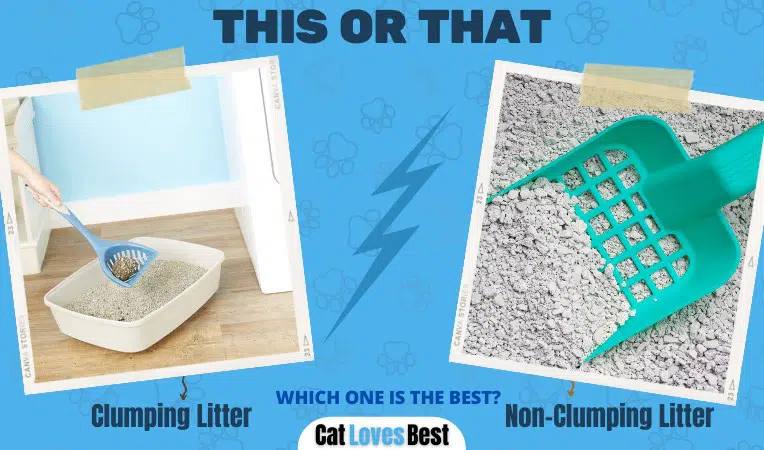
Which Is Better: Clumping or Non-Clumping Litter?
While there might be a straightforward answer to which type of litter is best, as it directly depends on your preference and also your cat’s. Many cats seem to like clumping litter because it is effortless for them to push it aside, but some felines prefer non-clumping clay litter.
All in all, your preference and your cat’s preference combined will determine which is the best cat litter for you and the one that you should stick with.
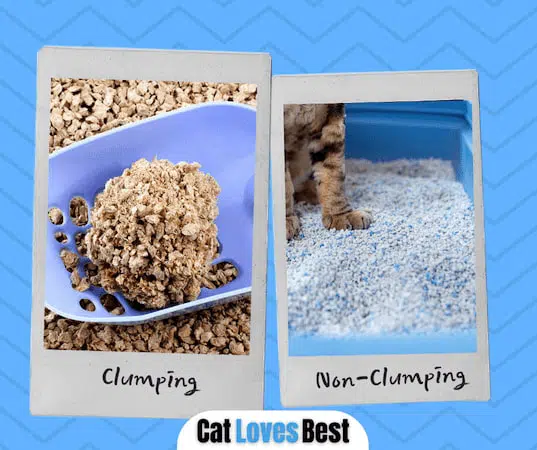
Here’s a quick at the properties of clumping and non-clumping litter for cats:
| Clumping Litter | Non-Clumping Litter |
| Can forms clumps | Cannot form clumps |
| Higher tracking | Lower tracking |
| Easy to scoop | Difficult to scoop |
| Materials are safe | Some materials are harmful |
| Higher dust | Low dust |
Now let’s talk about clumping and non-clumping litter in detail.
Let’s Talk About Clumping Litter
Clumping litter, as the name suggests, makes clumps. And these clumps can be scooped out and disposed of without replacing the whole contents of the cat litter box.
Invented more recently than its conventional non-clumping alternative, clumping litter creates small, firm clumps when they come into contact with the cat feces.
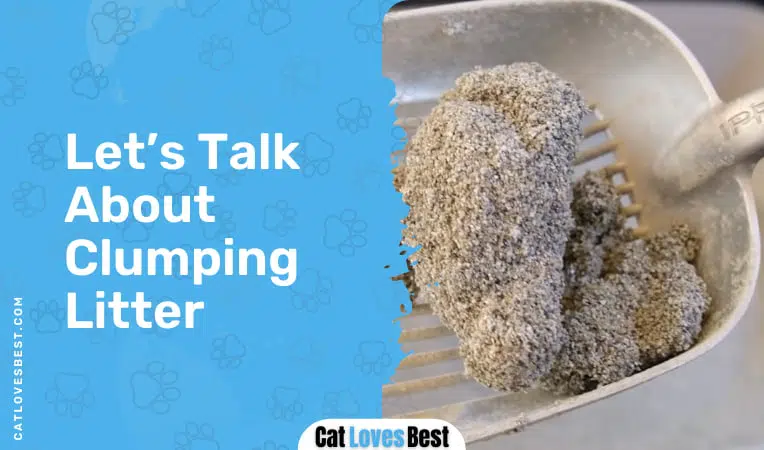
Litter clumps were first developed in the UK around the 1950s. In the beginning, it contained diatomaceous earth (aka silica) — which is treated as a known carcinogen and is also commonly collected from strip mining in an environmentally degrading process. Well, this material was not so good.
Luckily, the progress of clumping litter materials has come a long way; more and more new types of materials are used in the making of clumping type of litter.
Searching for what is the best hypollergenic cat litter, here you click here to know more.
Materials Found in Clumping Litter
Clumping litter is a handy and popular selection among cat owners. In fact, many cat parents would claim that using clumping litter makes the cleaning process easier and faster. And this type of litter is usually found in many different types of materials.
If you are planning on buying clumping cat litter, you’ll generally come across options with materials such as — clay, wheat, corn, tofu, and wood. In particular, clumping clay litter has been a popular option for a long time, due to the low-cost price and the cat’s inclination towards it.
On the other hand, wheat and tofu are new options, with low to moderate odor control, in the market these days. Whereas, wood is a unique option that is an eco-friendly choice for clumping bedding.
You should also check out unscented lightweight cat litter.
It Is Easy to Scoop
One of the main reasons why many cat parents prefer using the clumping litter type is because that it comes with an easy cleaning process. After your cat is done with her “business” in the litter box, the feces are then trapped in tight clumps, which makes them removing easier compared to the conventional litter type.
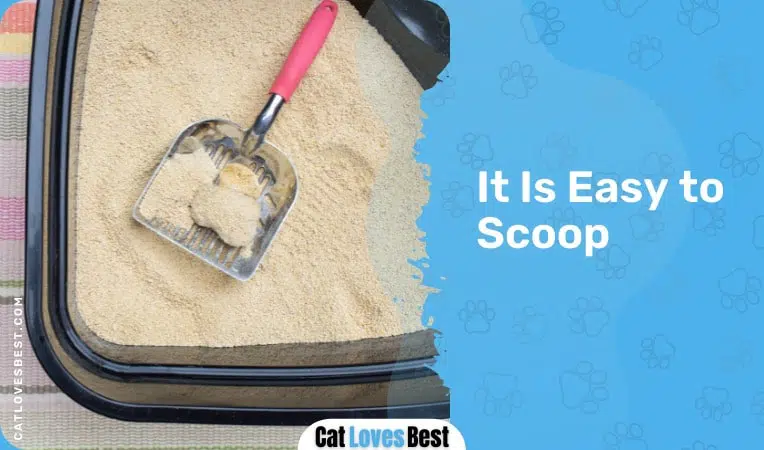
Moreover, clumping cat litter is very absorbent and designed in such a way that every time your cat uses her litter box, tight clumps are formed which can be scooped out easily.
Besides, you will see that when using clumping cat litters, you will also remove some of the litter itself along with the feces, meaning that every often you will have to add new litter. Doing so will ensure a consistent base layer.
Great Odor Control
With clumping litter, another benefit is that it traps the unpleasant odors very well. The bad smell is trapped inside the tight clumps, but non-clumping litter cannot contain the smell relatively well.
Clumping litter is a whole lot better than the traditional non-clumping type. If you are using non-clumping litter, even if you scoop out the feces every time your cat urinates or excretes, chances are that you will leave some behind. And that will start to smell very bad.
Whereas, the major benefit with the clumping litter is that the litter quickly forms in clumps when it comes in contact with the feces, and effectively traps any lingering odor.
Higher Tracking
Out of all the good features of clumping litter, there’s also a downside to it. Since clumping litter is so good at forming clumps are your cat has done her “business,” this also leads to higher tracking, as the litter gets caught in your cat’s paws.
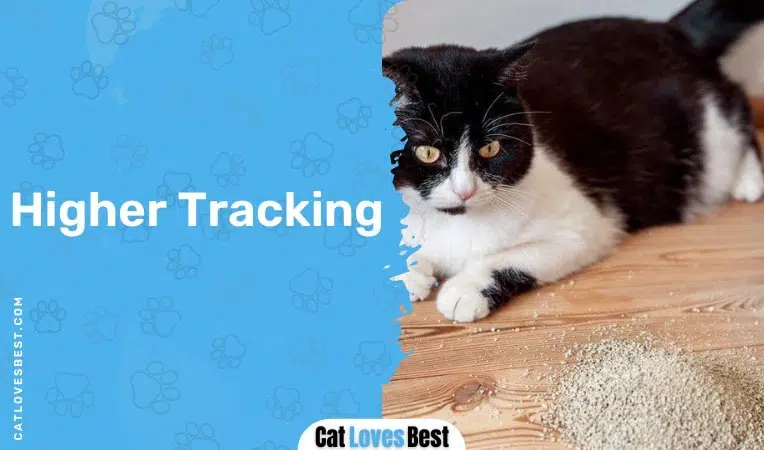
However, if you want to counter this problem, consider investing in some good litter mats that can help solve the problem of litter tracking in your house. Such cat litter mats come with a special surface material that helps in catching litter from your cat’s paws.
It Is Good for Cats
At last, the clumping litter type is good for cats (and the planet). Clumping litter makes use of safer materials such as clay, wheat, corn, tofu, and wood.
On the contrary, non-clumping litter is often made out of clay and also contains silica dust, and it is known to be harmful to both you and your feline pal. Moreover, clay litter is strip-mined, which is not good for the environment.[1]
Non-Clumping Litter: Is It Any Better?
Another option you have is the non-clumping litter type. It was one of the early commercially available cat litters type in the market. The reason? The non-clumping cat litter is effective when it comes to trapping odors related to cat urine, as it has the capacity to suck in relatively large volumes of cat urine.
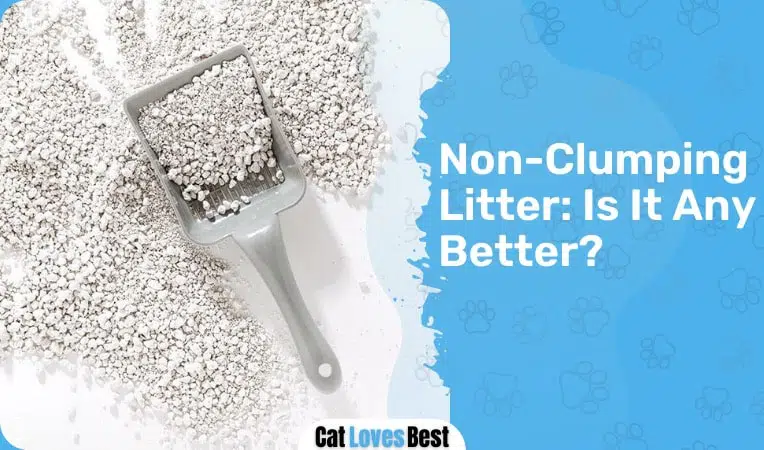
5 Types of Materials
Similar to the clumping type of litter, non-clumping litter is also available in five types of materials — pine, clay, silica crystals, recycled materials, and paper pellets.
Moreover, there’s also non-scented litter available in the market. Plus, you can also get non-clumping litters that come with extra additives, like baking soda or charcoal, which are specifically formulated to help control unpleasant smells.
Want to know which is the top rated cat litter brand right now on the market? Here you go.
Requires Frequent Cleaning
After your cat has used the litter box several times, you will see that the litter becomes saturated and the urine may start to gather in the bottom of the cat litter box. And for this reason, removing dirty, non-clumping litter often becomes a problem without entirely cleaning the litter box.
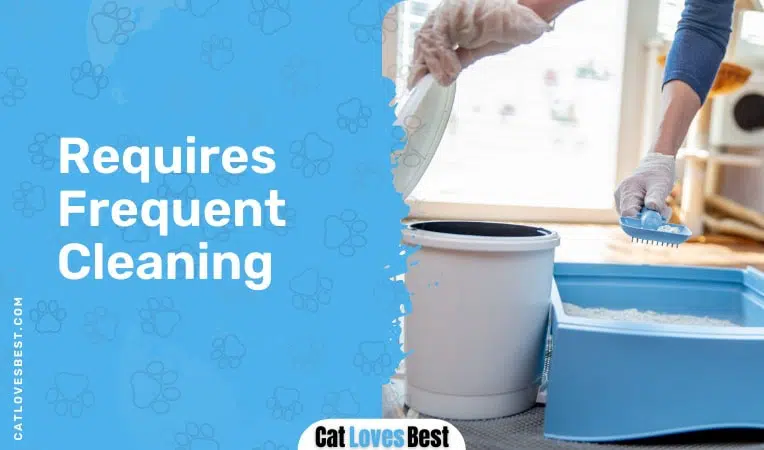
Likewise, many cat owners that use non-clumping cat litter for their pets, know that they need to replace the litter and clean the litter box at least once every seven days.
Lesser Tracking
While clumping litter has the major advantage of being sticky—as the constituent litter particles clump together, it can also lead to high litter tracking in the house, which can be a nuisance.
As for the non-clumping litter, they are very low-dust and control tracking as well as absorb odors effectively.
Some Materials Can Be Harmful
If you want to buy non-clumping cat litter, and check available options in the market, it is likely that you will come across non-clumping cat litter made of clay material.
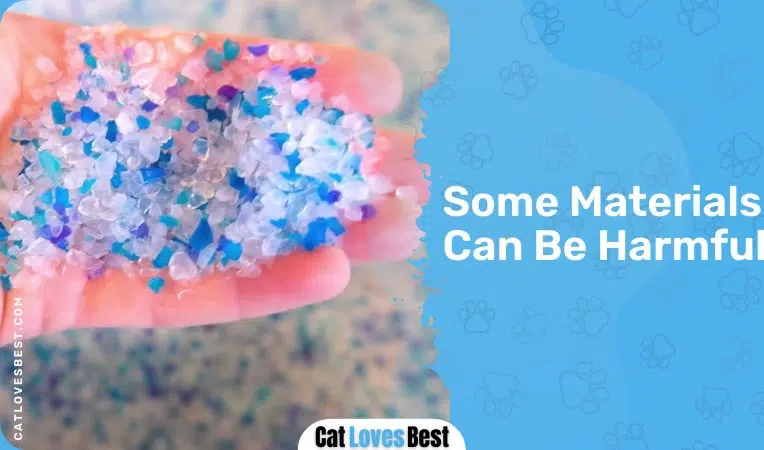
This material is strip-mined from the earth (which is considered bad for the environment) and it may also contain dangerous silica dust, which is harmful to both you and your cat.
It Is Cheaper
As I mentioned earlier, non-clumping litter is usually made of clay material, though there are some other types also available such as plant-based options — pine, corn, wheat. Some cat parents prefer non-clumping litter over clumping litter because it is often a cheaper option, and others choose it because their cats like non-clumping litter.
Our Favorite Choice — Non-Clumping vs. Clumping Litter
Choosing the right kind of litter for cats can be a daunting task for some cat parents. To make this easy for you, we have picked the best cat litter from the best brand for each type — clumping litter and non-clumping litter.
Precious Cat Ultra Hard Clumping Litter
This Ultra Hard Clumping Cat Litter from Dr. Elsey’s outperforms all the other clumping litters for different brands.
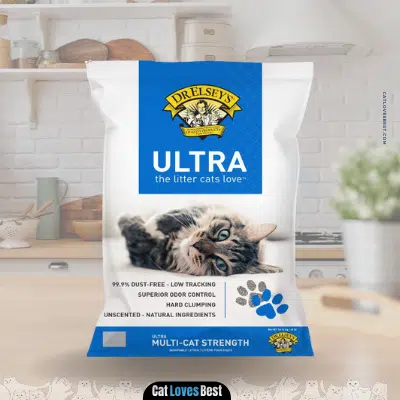
With a blend of tight odor control, easy scooping, and low dust characteristics — all at a low-cost price, we chose Dr. Elsey’s cat litter to be our top choice for the best clumping cat litter.
Feline Pine Platinum Natural Non-Clumping Litter
While clumping cat litter can be easier to clean, there can also be some cases where you can find non-clumping litter to be more beneficial.
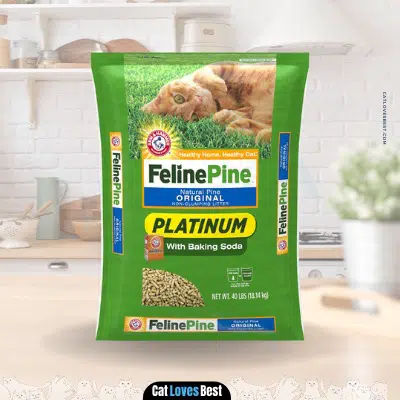
This non-clumping litter from Feline Pine does a great job of trapping unpleasant odors. Further, it doesn’t leave behind any messes stuck to the box like other litters from different brands. Also, you get an extra boost of absorbent, odor-eliminating freshness from the natural odor-fighting power of baking soda.
Quick Glance: Pros and Cons
Let’s take a quick look at the pros and cons of clumping cat litter:
| Pros | Cons |
| It is easy to scoop | Costlier than non-clumping litter |
| Great odor control | Higher litter tracking |
| Safe materials |
Now, a quick overview of the pros and cons of non-clumping litter:
| Pros | Cons |
| Non-clumping litter is cheap | Some materials can be harmful |
| Low litter tracking | Frequent cleaning required |
| Good odor control |
Conclusion
The ultimate winner of — clumping vs non-clumping cat litter entirely depends on you and your cat’s preference. Both types of cat litter come with their own ups and downs. Hopefully, now you know the actual difference between them.
On one hand, non-clumping litter offers low litter tracking, but it is harder to clean. On the other hand, clumping cat litter can be easier to clean, but it can also lead to higher tracking in the house. However, you can solve this problem by getting a decent cat litter mat.
References
- Clumping or non-clumping cat litter? — Natusan
- What is the best cat litter? Non-clumping vs. Clumping litter — PetMD
- What is cat litter made of? — Arm and Hammer

